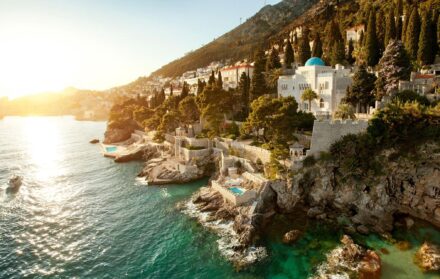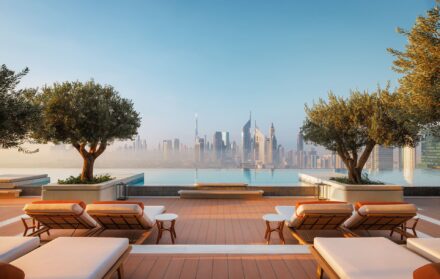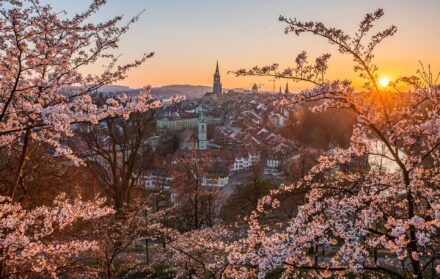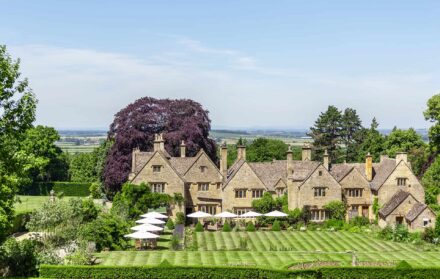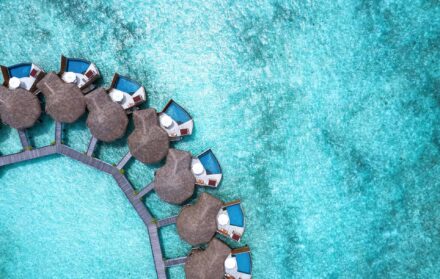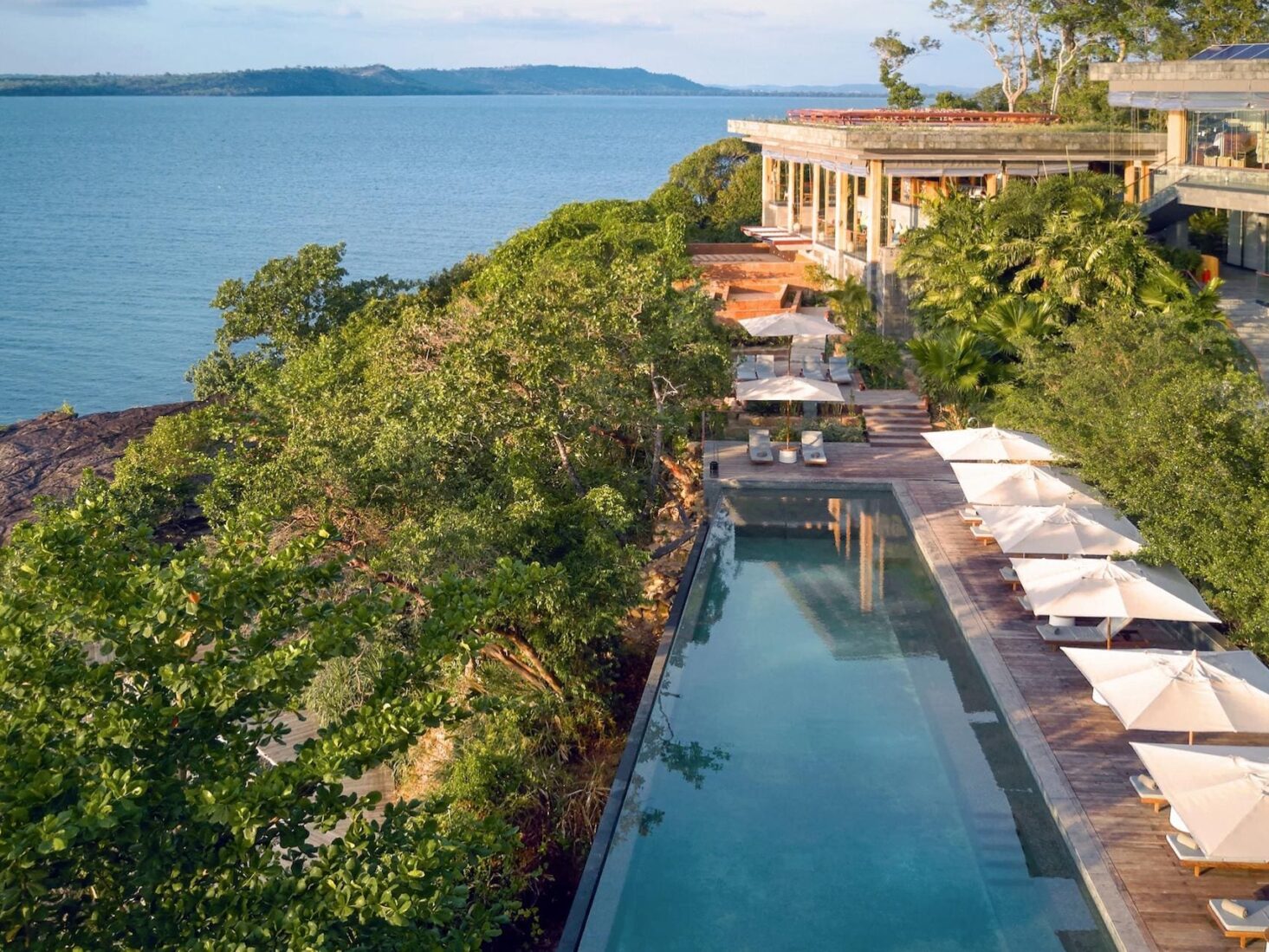
Cambodia: South East Asia’s Undiscovered Gem
Exactly 40 years on from the fall of the Khmer Rouge, Cambodia has emerged as a vibrant country driven by a young, entrepreneurial population. Three new hotel openings in the south confirm the country as luxury
The places I dream of visiting are many, but Cambodia was never one of them. The total of what I knew about this small Asian country was drawn from the harrowing film The Killing Fields and vague schoolgirl memories of the Cambodian-Vietnamese war. So upon arrival at Siem Reap airport, I had no expectations, nor did I ever envision losing my heart to this captivating kingdom.
Once considered a mere stopover, with travellers staying just long enough to see Angkor Wat, one of the world’s largest religious monuments, before moving onto the beaches of Thailand or jungles of Vietnam, Cambodia is now the destination rather than the sideshow. Forty years on from the end of the Khmer Rouge’s reign of terror, this country is undergoing momentous change, driven by the vigour and energy of the younger generation – 65 per cent of the population is under 30. Cambodia’s greatest national treasure is not the temples of Angkor but its people, with their indomitable spirit and optimism.
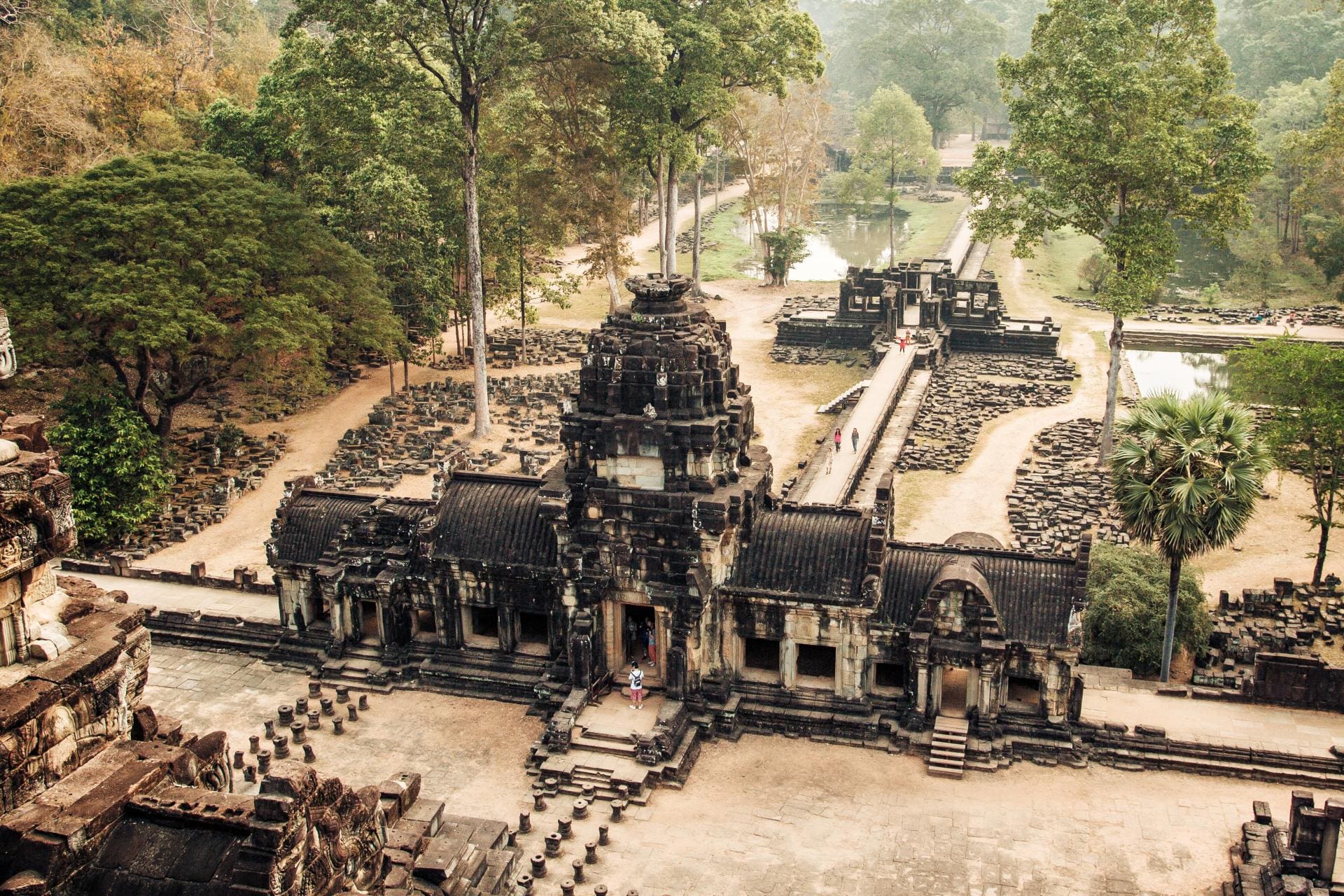
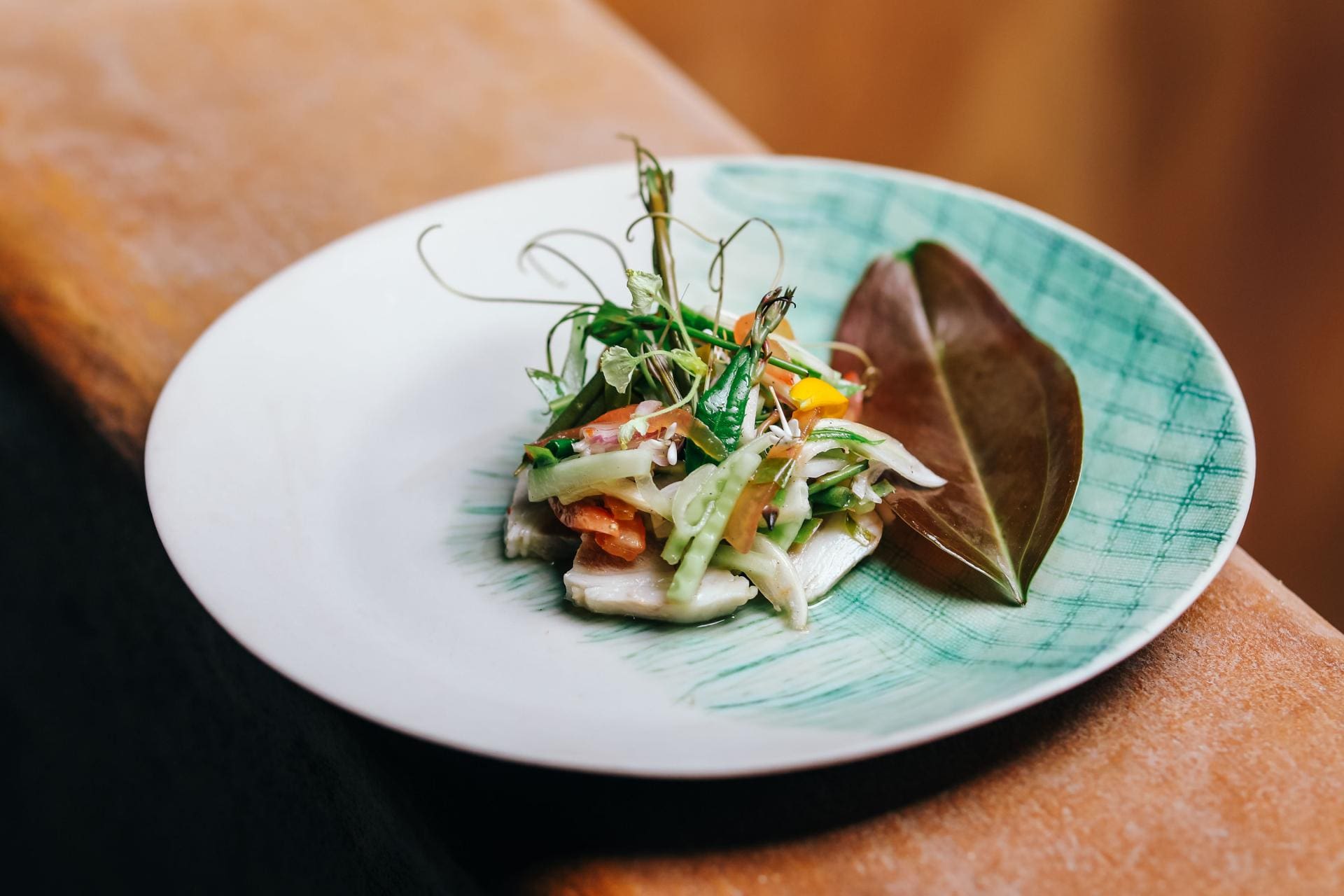
Though the advent of three new five-star resorts in the south has earned Cambodia its place on the lists of ‘Where to Go in 2019’, Angkor Wat and its surrounding glories must be seen, so I began my Cambodian adventure in Siem Reap. I stayed at Phum Baitang (the hotel that Angelina Jolie booked exclusively for three months while she was filming First They Killed My Father) just a few miles – but worlds away – from the frenetic scramble of the city centre. Together, the 45 wooden, stilted, thatched-roofed villas, clustered over eight glorious acres of rice paddies, evoke a traditional countryside village. Inside, the design is understated and elegant, with neutral linens, dark wood and Asian antiques dotted all around. As if by magic, the grounds are manicured, the villas serviced, and the flowers and fruit refreshed by the unobtrusive, smiling staff.
After my first day of damp and dusty sightseeing in claustrophobic heat, I took myself off to the Spa Temple – which features seven treatment rooms and is inspired by the carvings and columns of Angkor Wat – for a traditional Khmer massage. The therapist kneaded and pummelled out every kink and knot in my temple-fatigued body. After a swim in the rough-hewn 50m black stone infinity pool, with a ginger, basil and lemongrass martini in hand, I was temple-ready once again.
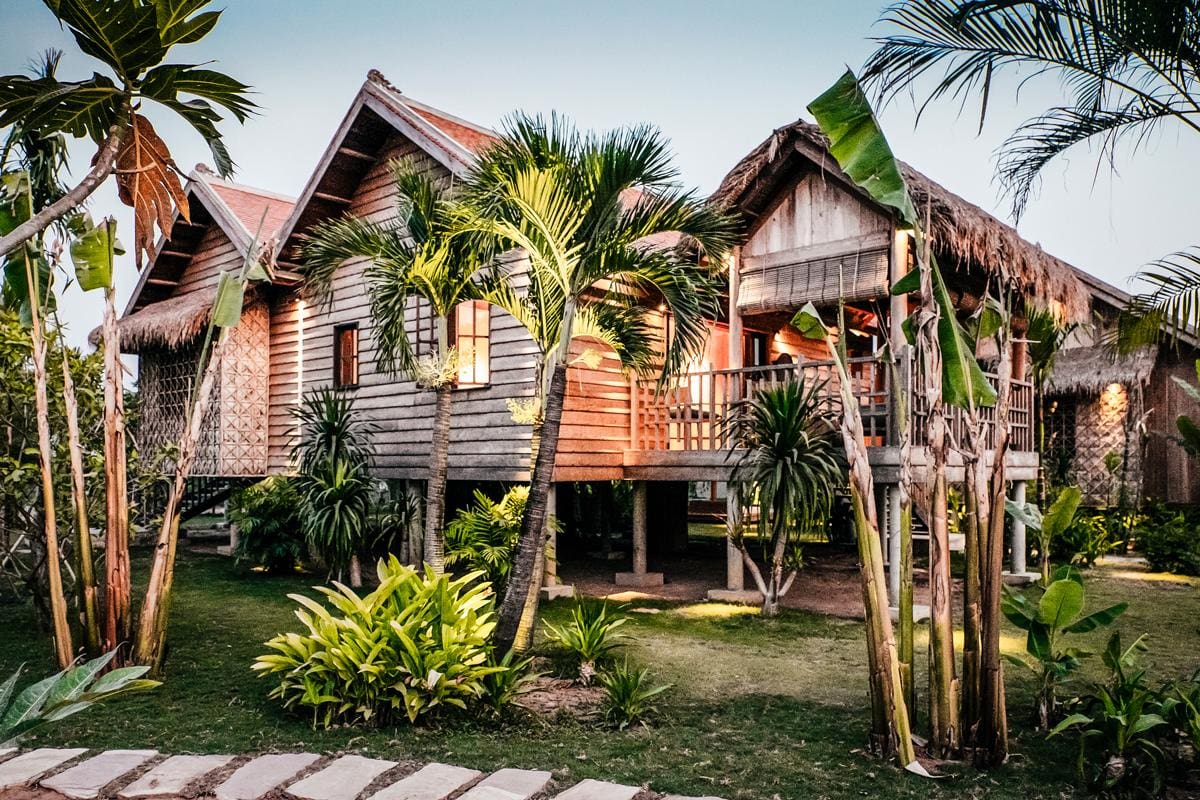
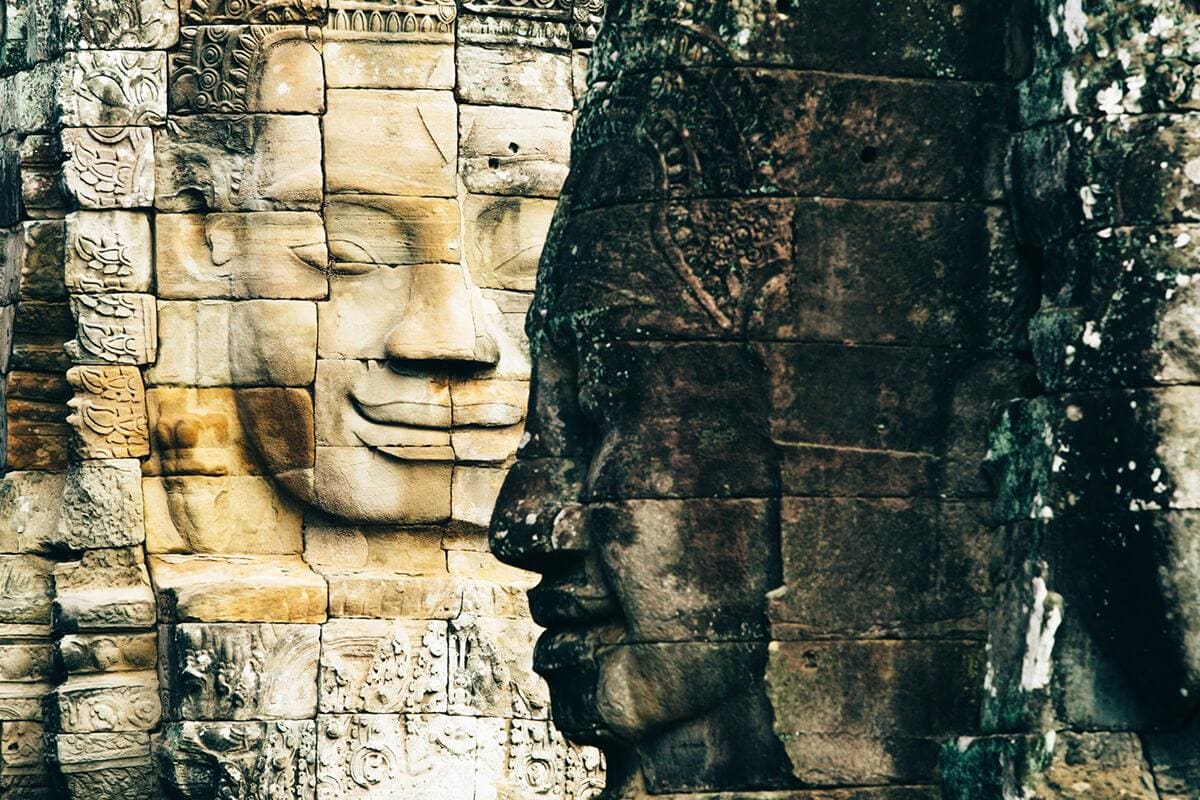
Three days later, replete with Cambodian culture and history, I flew to Sihanoukville –a city of casinos, congestion and construction, and best avoided. Just a 20-minute drive from the airport is the jumping-off point for the Koh Rong archipelago, a chain of 15 tropical islands and also the mainland reception for Six Senses Krabey Island. With the check-in formalities sorted, I boarded a sleek speedboat and glided across the glistening Gulf of Thailand.
From a distance, this tiny dot of an island looks uninhabited. However, as we got closer, I could see – woven into the tapestry of dense wilderness – the newest Six Senses property. A smiling welcome, complete with lemongrass-infused flannels and cold drinks, was followed by an electric buggy ride up to Villa 18, my home for the next three days. Most of the 40 grey stone, wood and glass residences (each with its own opalescent-tiled private pool and a green living roof) are set in the hillside, with a few opening onto the water. Inside there’s golden Tasmanian oak, a calming pastel palette and windows that overlook the the blue sea below. At every turn, Six Senses Krabey Island celebrates nature, be it in the public spaces, where the lanterns and ceiling installations are fashioned on Khmer fish traps, or in the villas, where the furniture legs are modelled on the Romdoul blossom, Cambodia’s national flower.
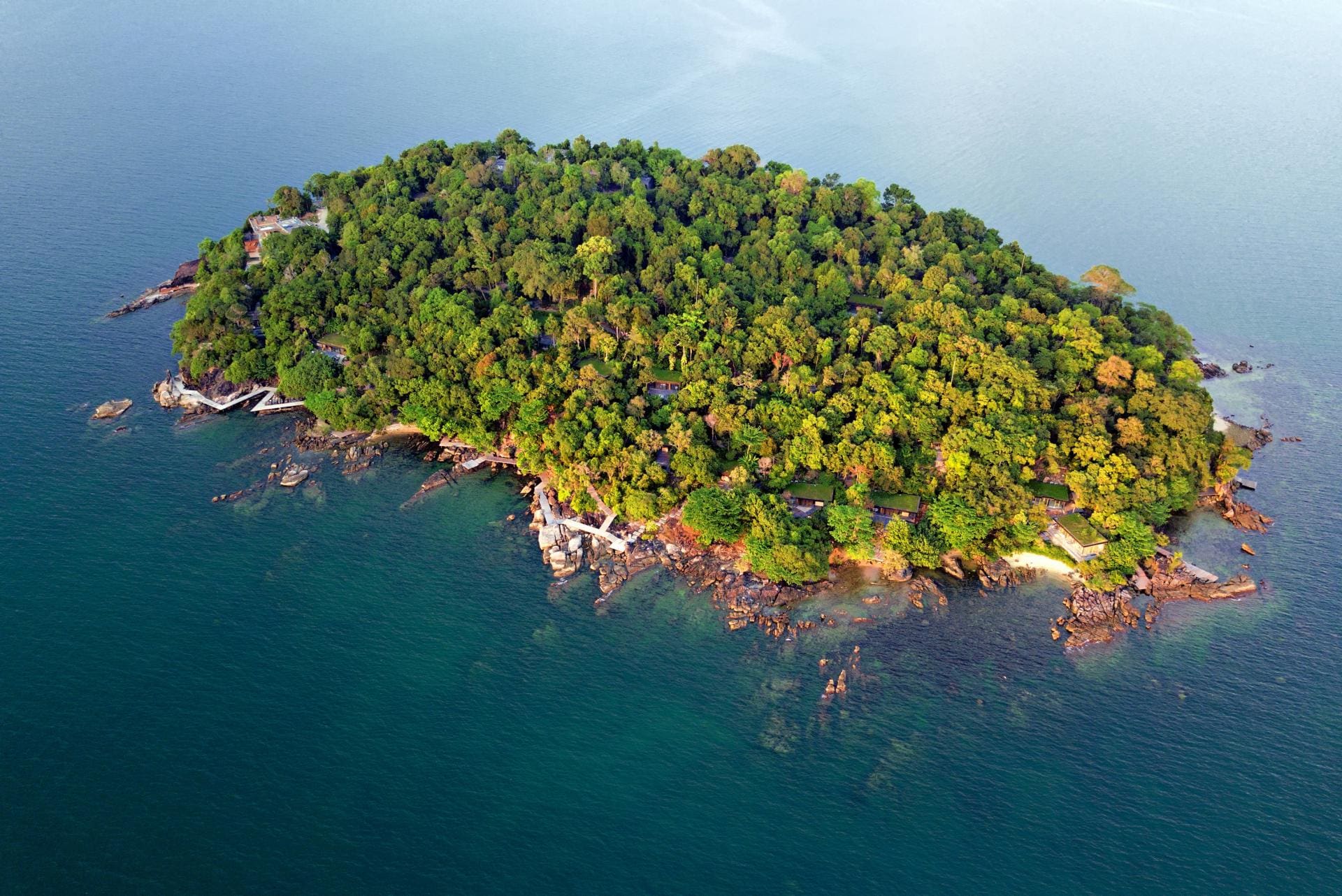

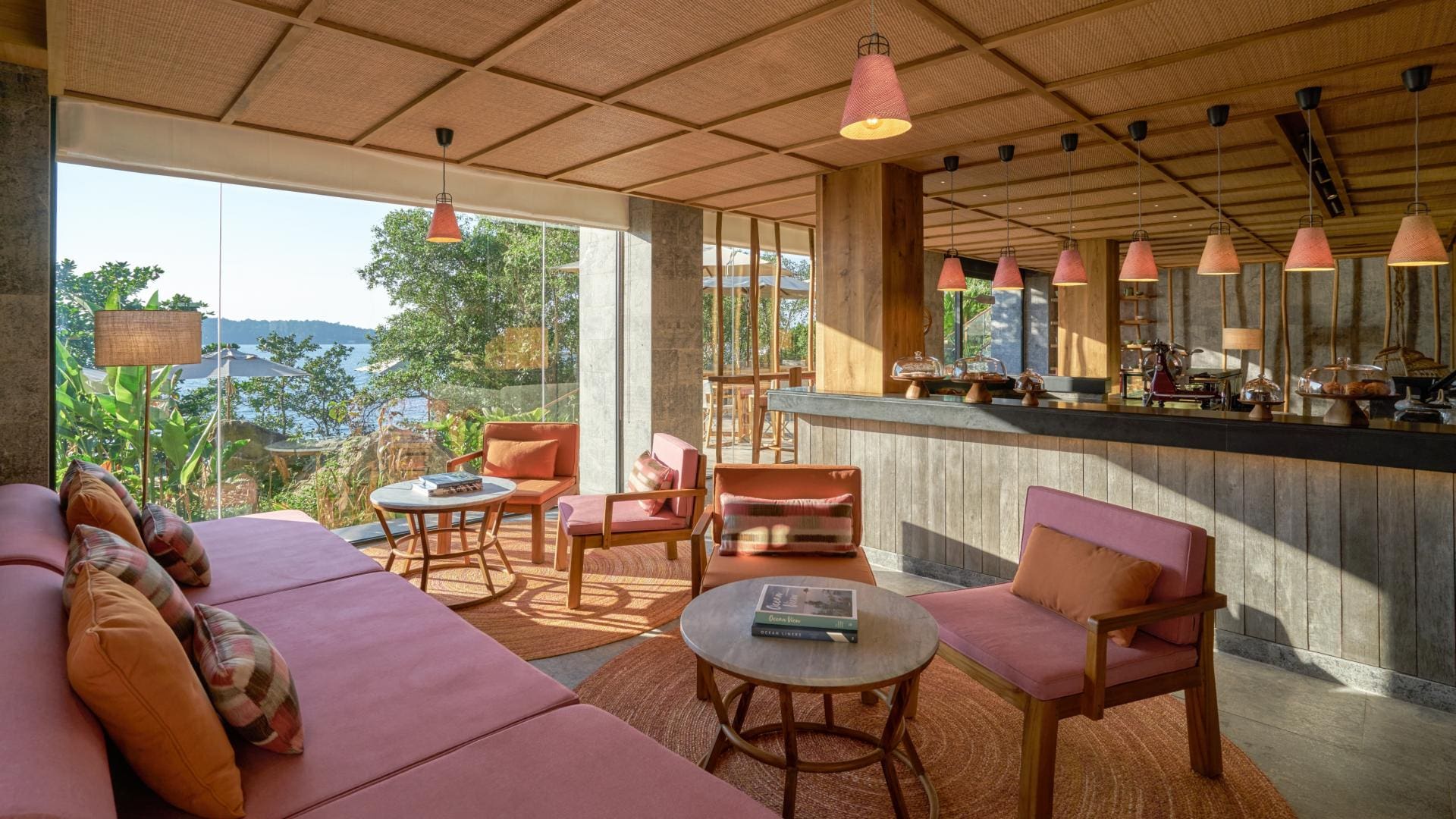
Six Senses, long a front-runner in sustainability, has raised the bar to new heights on Krabey Island. There’s a reverse osmosis plant and crystal water refinery that produces drinking water without any nasty plastic bottles. Energy conservation initiatives such as solar power, low-chemical pool filtration and water recycling are in place. Most of the fruit and vegetables are grown on the organic farm located on the mainland, which is also home to chickens, goats and bees. Even the plastic straws have been replaced by stainless steel versions.
Undertaking the 42m climb up to the summit of the 30-acre reserve the next morning left me breathless but dazzled. Perched at the top is the signature spa, which offers treatments ranging from a very serious wellness assessment, which uses biometric screening technology, to a prescriptive multi-day programme. For those who are dedicated sybarites, there’s an extensive menu of indulgent treats, such as the Wild Kashmir facial, which uses turmeric and lavender, or a Khmer Herb massage, the ingredients for which come straight from the spa garden. Just don’t leave the island without experiencing the thrill of a sunrise aerial yoga session at the rooftop shala.
A five-minute speedboat ride away is Alila Villas Koh Russey (also known as Bamboo Island) – a very different destination. At first glance, I was wowed by the linearity of the resort. The 50 flat-roofed, gunmetal-grey beachfront pavilions and 13 villas were designed by Singapore-based architect Chioh-Hui Goh who found inspiration in the krama, the patterned cloth widely used in Khmer life. Everywhere there are nods to Cambodia’s heritage, from the latticework of the teak canopy in the open-air reception to the geometric lines of the wooden headboards and cabanas. Even the design of the terraced communal pool is a contemporary interpretation of Angkor Wat temple.
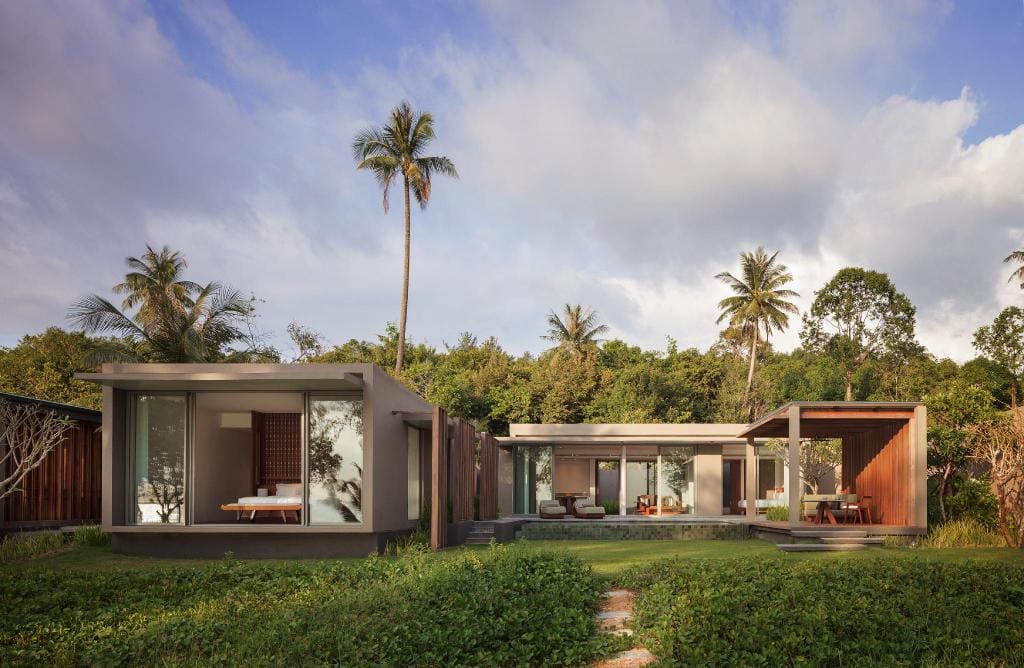
Alila Villas Koh Russey
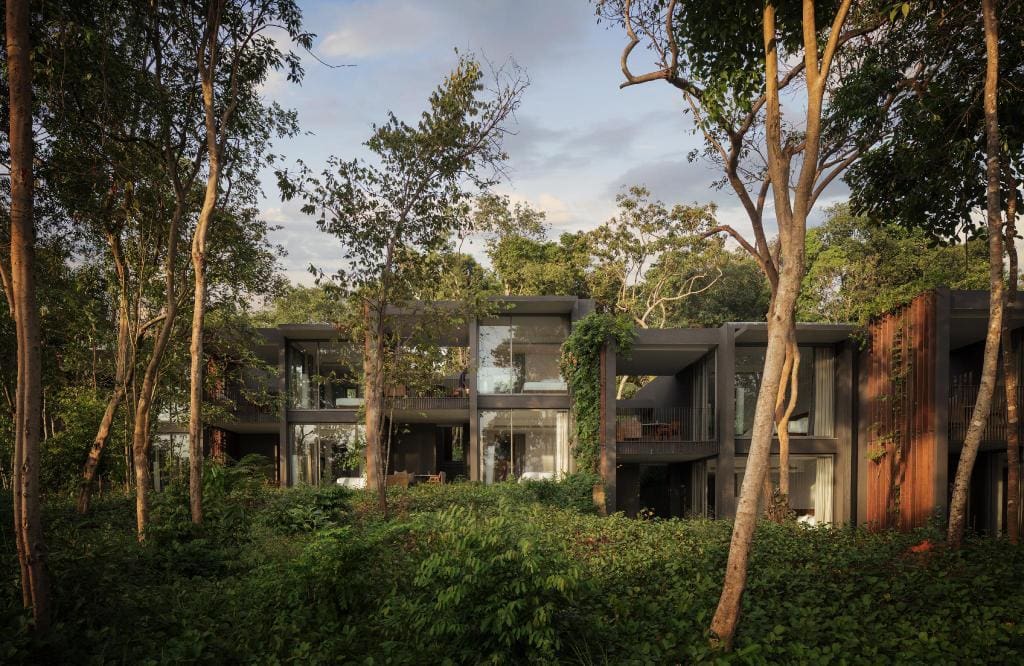
Set in 60 acres of verdant tropical vegetation, the resort’s overall footprint covers only 15 per cent of the island, which leaves lots to be explored. But the resort’s star attraction is its two-mile-long stretch of copper-coloured beach, backed by banyan and casuarina trees – something no other resort in Cambodia can offer. All the rooms face the ocean and my time here was spent walking the shoreline, kayaking, paddle boarding, snorkelling and swimming in the sapphire sea. At lunch, the freshest ceviche, served with icy-cold rosé at the Beach Shack, offset the steamy heat. On offer were all sorts of experiences, from pagoda blessings to sunset cruises to excursions to Kampot.
My final stop was Shinta Mani Wild, located deep in the Cardamom Mountains, once a stronghold of the Khmer Rouge. An arduous three-hour car journey from Sihanoukville brought me to the entrance of the 865-acre camp, situated between Bokor National Park and Kirirom National Park. Parked inside the gate was a fleet of 1960s US jeeps (used during the Vietnam war). I climbed aboard one and was delivered to a 30m tower to zip-line into Headquarters, aka reception, (there’s a definite vibe of the US television hit MASH going on here, and even the ceiling is US Army surplus camouflage netting). After two zip-line rides – the first over jungle, and the second above the Tmor Rung river and its boisterous waterfall – I touched down in the Landing Zone Bar. A team of gentle-souled, smiling Cambodians manoeuvred me out of my corset-like harness, which was exchanged for a jasmine-scented flannel and a G&T.
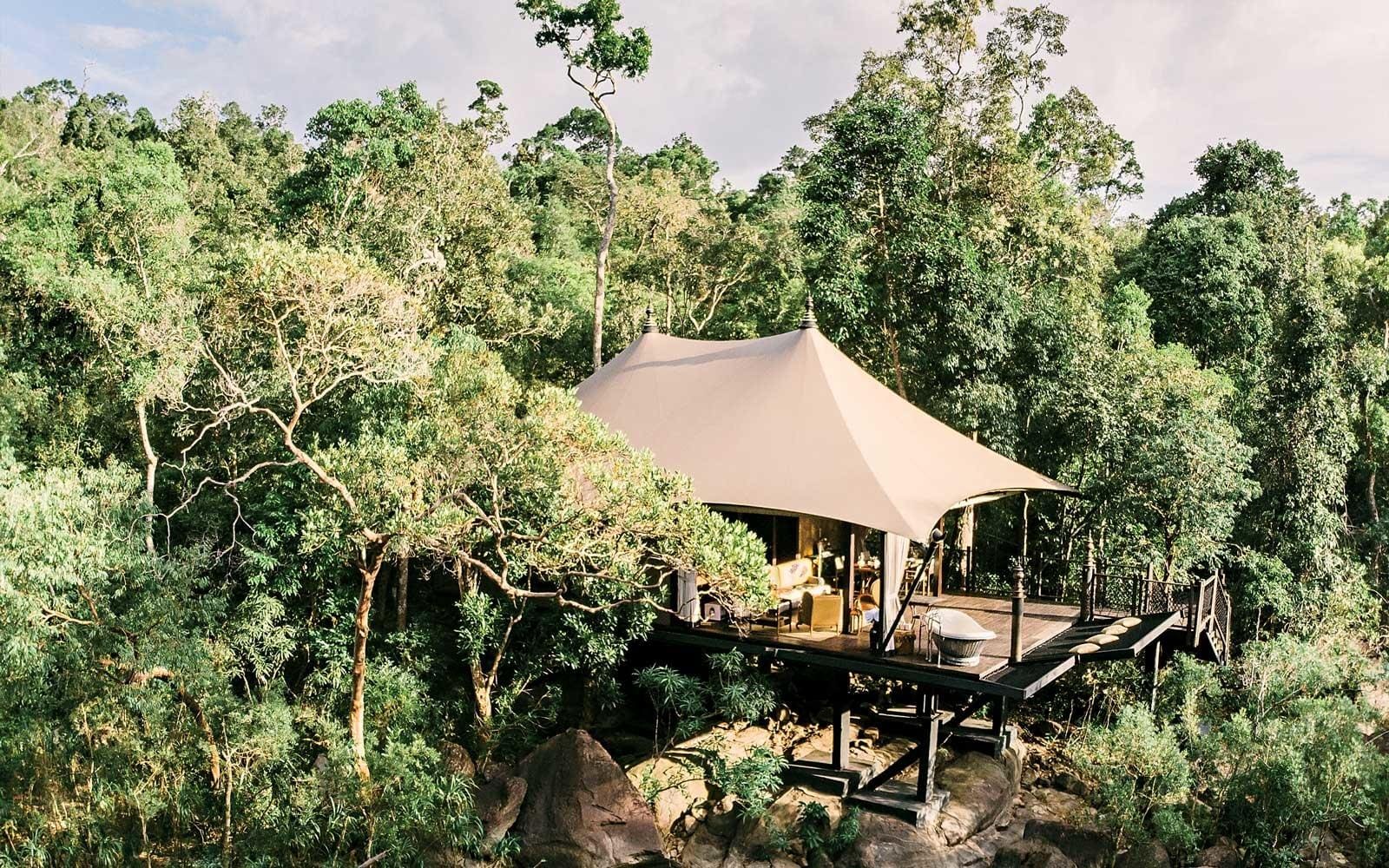

Ten years and millions of dollars in the making, this insanely wonderful, slightly bonkers creation is the work of American-born designer and hotelier Bill Bensley. Asked about the inspiration for the camp, he countered with two questions: “What if Jackie O had gone glamping in this wilderness with the King of Cambodia in the early 60s? What would it have been like?” Exactly like Shinta Mani Wild is the answer.
Each of the 15 tents is massive, with a dark koki-wood floor, a four-poster bed, sofas inside and out, antique trunks, an open-air roll-top bath, a dining table and a cocktail bar with a cowhide-covered cold box, filled with champagne, fine wine and local beer. I was given the Jackie O tent (Tent 1), which is pitched on boulders exhilaratingly close to a rushing river. Over the door hangs a photograph of Jackie taken on her 1967 visit to Cambodia. It’s with these details that Bensley has so brilliantly achieved his goal of marrying the glamour of royalty with the romance of colonial-style safari travel.
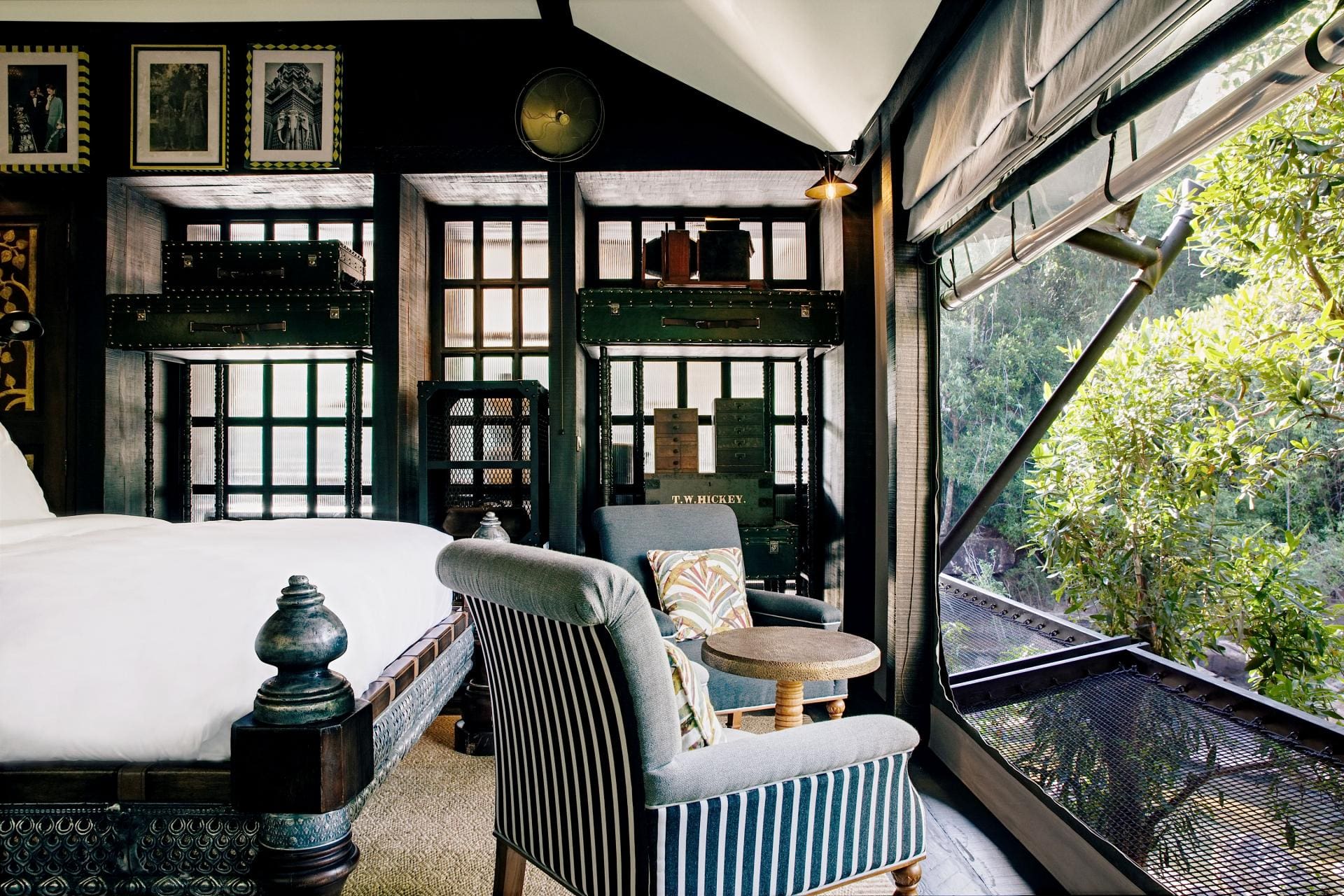
For the intrepid guest, Shinta Mani Wild is nirvana. My adventure butler, Yi, organized an action-filled, adrenalin-fuelled few days, all detailed on a sheet of rolled parchment and illustrated with a watercolour rendering of the camp. My first morning was spent learning tenkara, the Japanese meditative art of fly-fishing, with Mongolian expert Tulga. With his help I became the first guest to catch a danio, a small freshwater fish. The next morning, I joined the Wildlife Alliance’s poacher patrol doing their rounds on motorbikes in this river valley. Their mission is to protect the wildlife and forests from animal poaching and illegal logging. There was also swimming, foraging with the chef, spotting gibbons, bird watching and camera trapping with the head botanist, and Yi turned out to be a dab hand in a kayak.
Heading home after nearly three weeks, I felt blessed. I had seen the temples of Angkor, visited the hat-trick of new five-star properties and zip-lined for the first time. But, most importantly, I had discovered the remarkable metamorphosis of a once war-torn country into a vibrant yet unspoiled destination. Cambodia more than deserves its billing at the top of all those ‘Where to Go in 2019’ lists.
Bailey Robinson offers tailor-made itineraries to Cambodia. Three nights at Phum Baitang, three nights at Six Senses Krabey Island, three nights at Alila Villas Koh Russey (all bed and breakfast), and three nights at Shinta Mani Wild (all-inclusive), including international flights and transfers, from £6,400 per person, baileyrobinson.com




